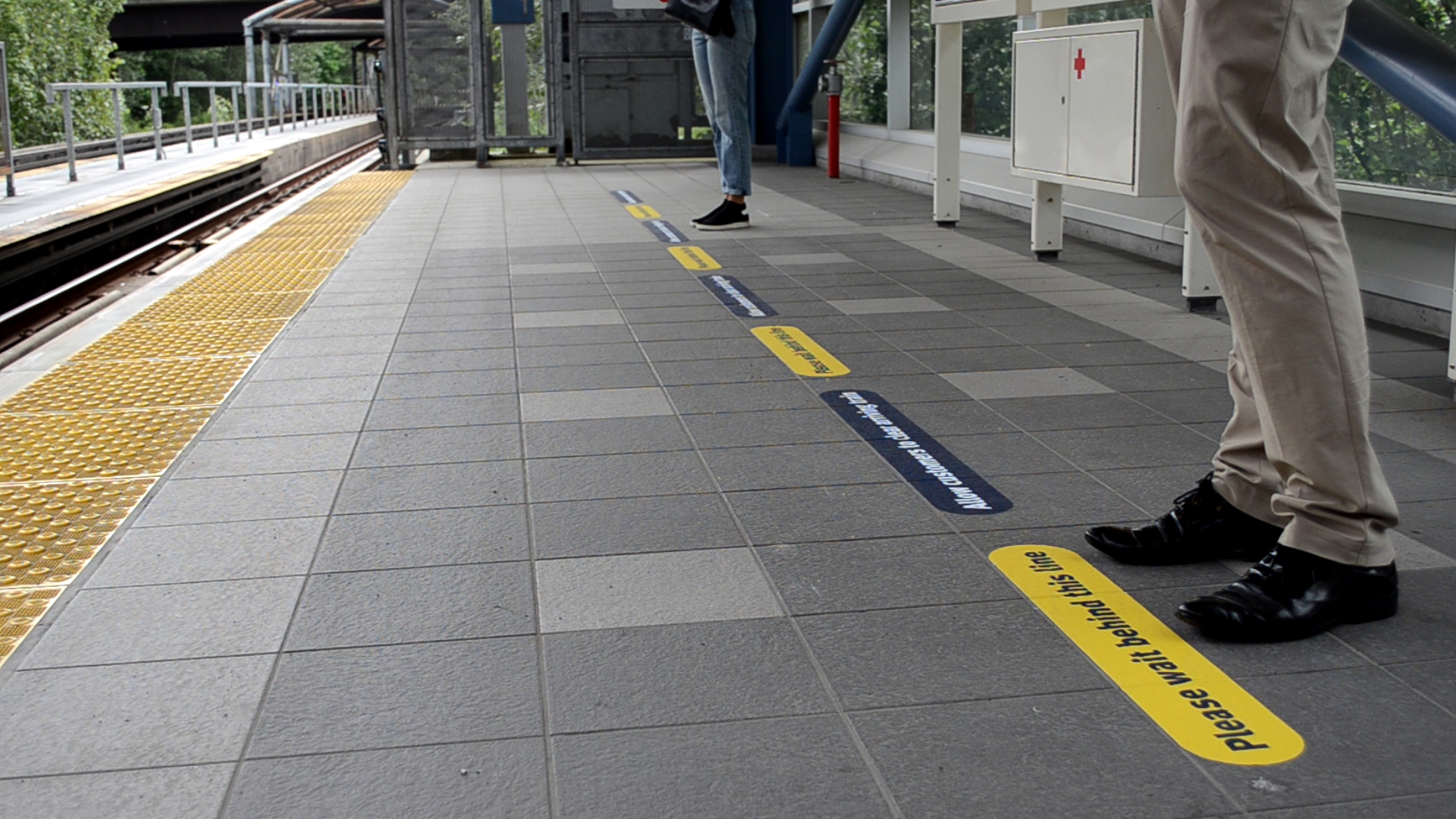TransLink implements Safe Operating Action Plan
TransLink implements Safe Operating Action Plan

Enhanced cleaning, restored service, masks recommended on public transit
In order to support British Columbia’s Restart Plan, TransLink is introducing new and enhanced measures to make transit service safer and keep it available for those who need it.
Over the next several weeks, customers will notice changes at transit stations and on vehicles designed to improve sanitization, create space where possible, and enhance personal safety.
TransLink’s initiatives, many of which have been taken since the beginning of the pandemic, are now part of a Safe Operating Action Plan. This plan will be implemented in phases to meet the needs of our customers as B.C.’s economy re-starts. Below are the steps customers will see, as well as the actions we are asking them to take.
What we are doing to make transit safer:
Increased Cleaning and Sanitizing
- Deploying cleaning “pit crews” to disinfect SkyTrain cars at high traffic stations.
- Increasing bus and SeaBus disinfecting sprays to twice per week in addition to daily cleaning schedules.
- Maintaining daily cleaning and disinfecting schedules on SkyTrain and West Coast Express cars, as well as HandyDART vehicles.
Managing Physical Space
- Limiting fare gate access at busy stations to help manage the number of customers on SkyTrain.
- Installing two-metre spaced decals at some bus stops and station entranceways to help guide customers.
Adding Service to Create More Space
- Restoring service across all modes to add more capacity, including to routes which were previously reduced. Service will be operating at nearly the same levels as before the COVID-19 pandemic.
- Monitoring passenger loads in order to deploy additional service at times and on routes where physical distancing is more difficult.
What customers can do to enhance their own personal safety and that of fellow passengers:
- Stay off the system if you are sick.
- Wear a non-medical mask or face covering while waiting or on-board our vehicles.
- Travel outside of peak times when possible. This is especially recommended for vulnerable people.
- Allow more time for your commute.
Quotes
Kevin Desmond, CEO, TransLink –
“Thousands of essential workers have relied on transit every day during the pandemic and many of our customers will return over the coming weeks and months. We’re committed to keep our system running and making it widely available to the people of Metro Vancouver as they go back to work, to school, and to moving around the region. Our Safe Operating Action Plan is meant to make transit as safe as possible and asks our customers to help out by keeping themselves and their fellow passengers safer.”
Dr. Bonnie Henry, British Columbia’s Provincial Health Officer –
“Public Health and WorkSafeBC are working with transit agencies to ensure all reasonable steps are being taken to prevent the spread of COVID-19, however, it’s clear that maintaining a safe physical distance may not be possible in every situation. We recommend all passengers consider wearing a face covering while using public transit, especially during those instances where physical distancing may not be possible. We also ask the public to be patient during this challenging transition period and we are grateful to British Columbia’s transit agencies for doing everything possible to protect the public during these changing times.”





